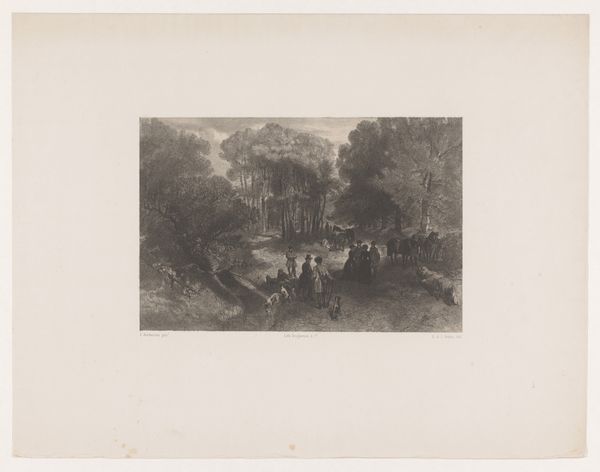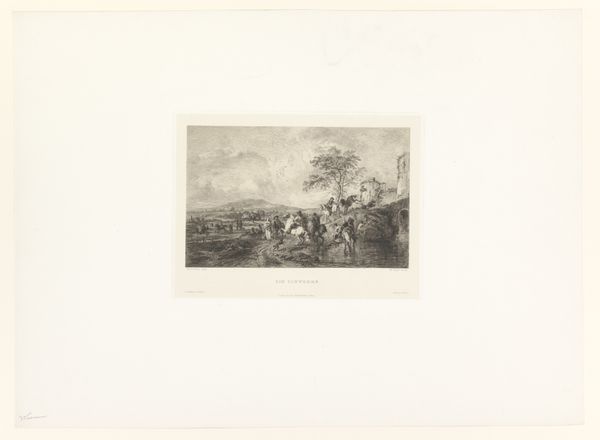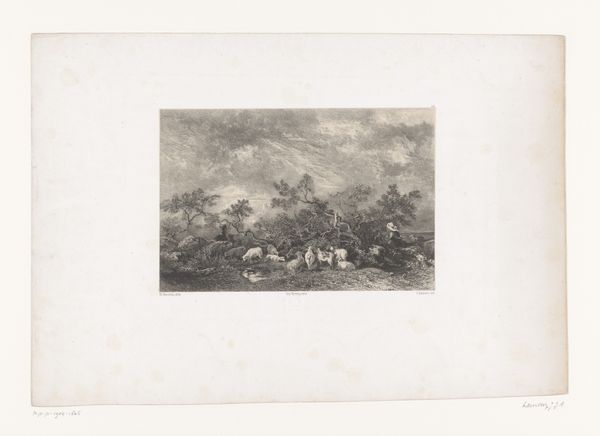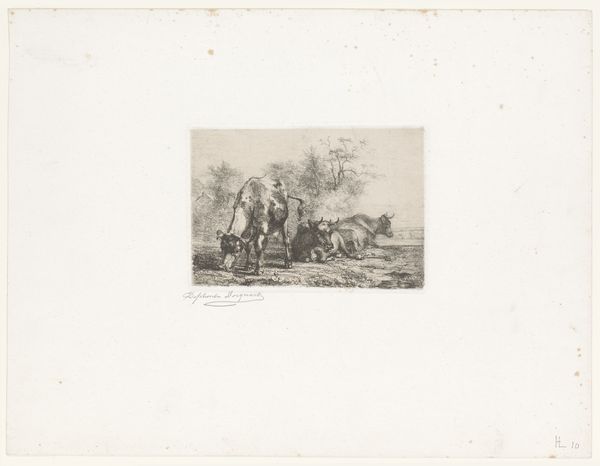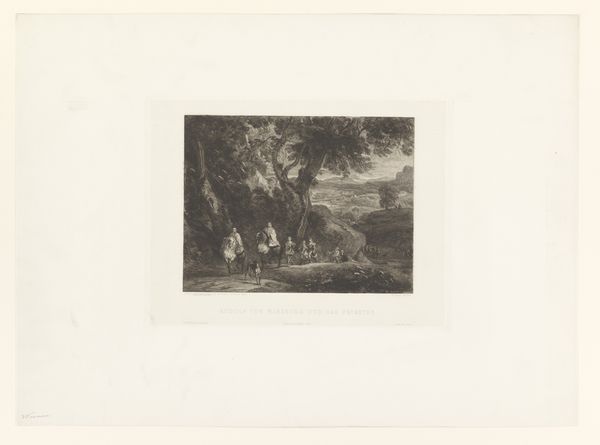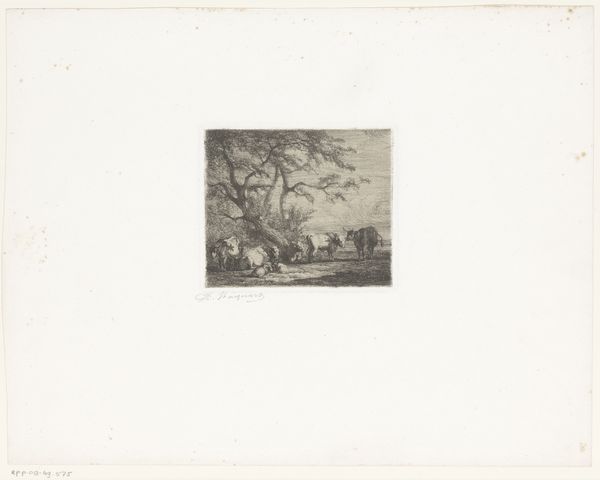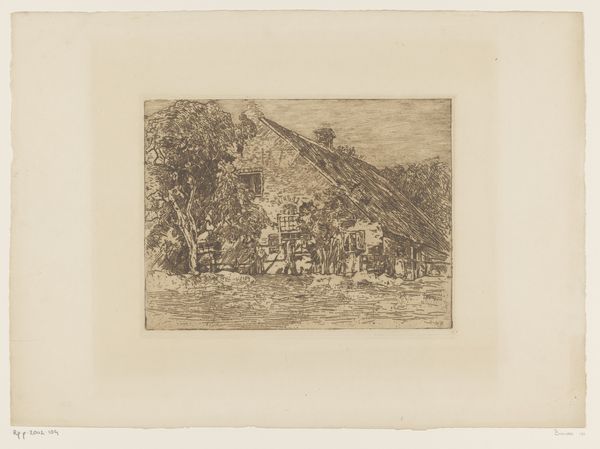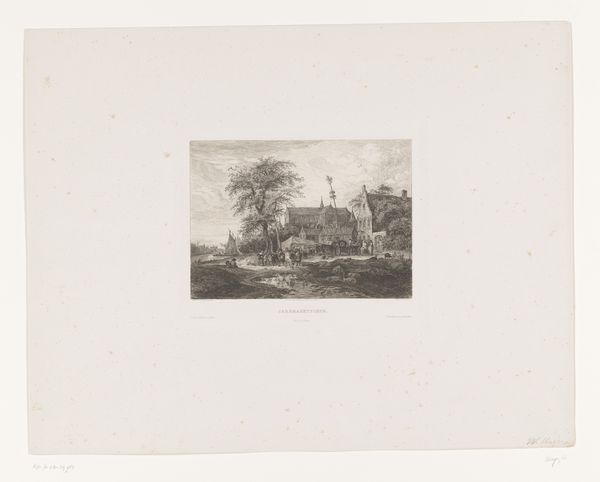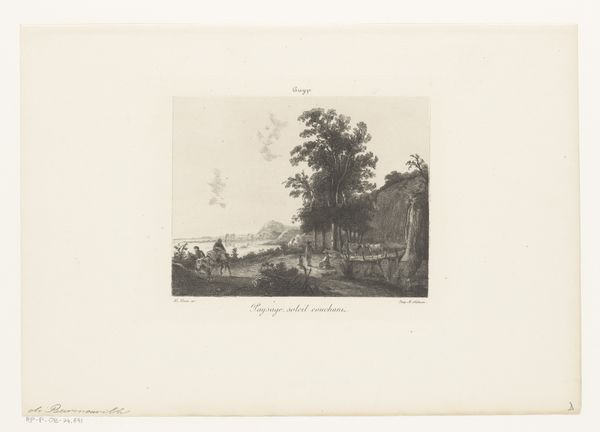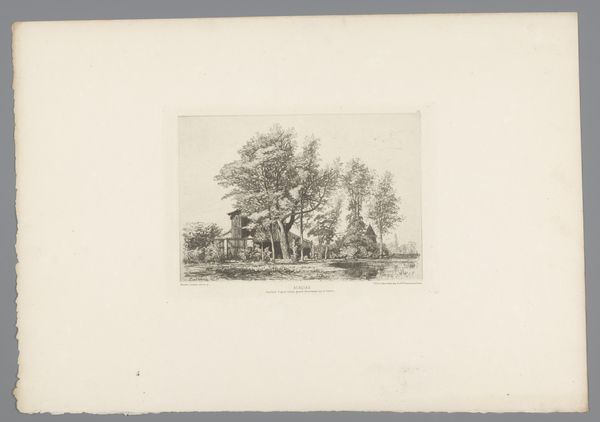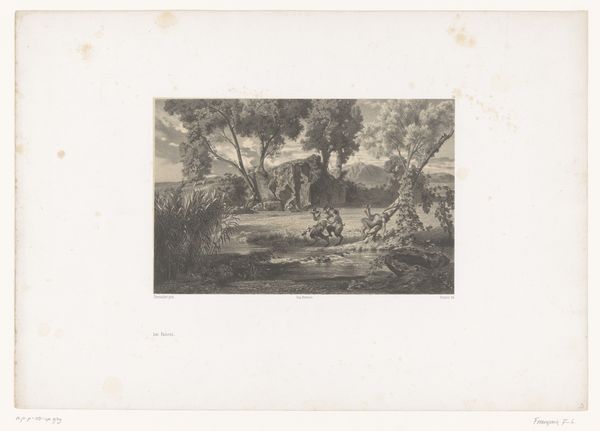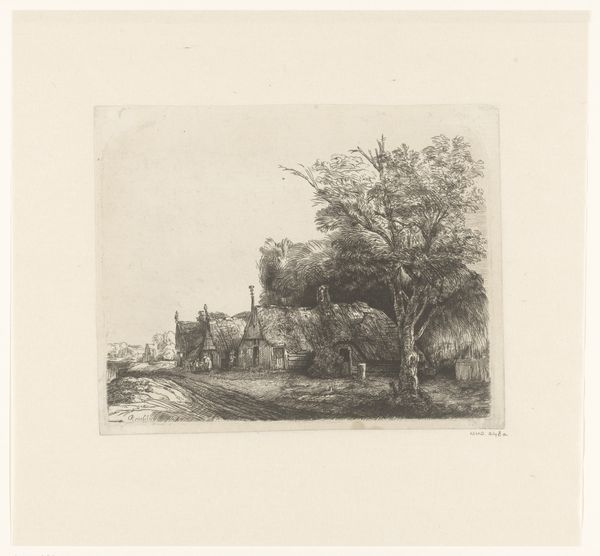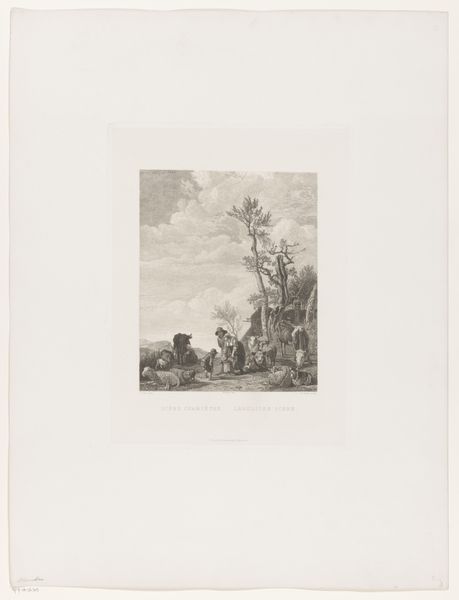
print, etching
# print
#
etching
#
landscape
#
horse
#
genre-painting
Dimensions: height 172 mm, width 256 mm
Copyright: Rijks Museum: Open Domain
Curator: Before us we have “Gezelschap met paarden bij een smederij,” or "Company with horses at a forge," an etching which art historians believe to be the work of William Unger sometime between 1847 and 1889. Editor: Immediately I am struck by the labor hinted at within this bucolic scene; it seems to be a celebration of rural industry and, perhaps, a critique of industrial development, despite its modest scale. Curator: Absolutely, you can almost smell the coal smoke rising from the blacksmith's forge. Unger truly captures the atmosphere of this scene. Etching allows for a delicate line work, perfectly suited to evoke the minute details of the figures, animals, and buildings. Editor: The print medium, of course, allowed for wider distribution—serving as both art object and mode for circulating imagery of the Dutch countryside. It becomes accessible art, mirroring and elevating common labor. Curator: Yes, and note how the landscape dominates the composition. It gives a sense of harmony between the people and their surroundings; you get the feeling the work occurring is as natural as the passing of the seasons. What do you make of the arrangement, placing the viewer looking in at the daily life? Editor: Well, considering the era and the development of industrialization, that is an active decision by the artist; the etching celebrates handcraft but it obscures the labor; it turns toil into charm, which for who could acquire the art was something pretty different from living it. Curator: I find myself admiring the horse—he appears exhausted yet calm, resigned, almost! Such nuanced understanding and compassion of how we relate to animals through work… perhaps a bit of melancholy, even? Editor: Agreed. The horse reminds us of our own reliance on non-human labor—a reliance, of course, etched permanently in economic terms. Curator: This print shows how Unger elevated such a mundane moment into something beautiful. Editor: Indeed, by focusing on the image’s journey and creation, we see how seemingly rustic scenes still connect directly to debates about labor, class, and consumption. It is a beautiful piece.
Comments
No comments
Be the first to comment and join the conversation on the ultimate creative platform.
